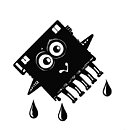- Joined
- Aug 19, 2017
- Messages
- 2,924 (1.05/day)
Intel has recently revealed a security vulnerability named Downfall (CVE-2022-40982) that impacts multiple generations of Intel processors. The vulnerability is linked to Intel's memory optimization feature, exploiting the Gather instruction, a function that accelerates data fetching from scattered memory locations. It inadvertently exposes internal hardware registers, allowing malicious software access to data held by other programs. The flaw affects Intel mainstream and server processors ranging from the Skylake to Rocket Lake microarchitecture. The entire list of affected CPUs is here. Intel has responded by releasing updated software-level microcode to fix the flaw. However, there's concern over the performance impact of the fix, potentially affecting AVX2 and AVX-512 workloads involving the Gather instruction by up to 50%.
Phoronix tested the Downfall mitigations and reported varying performance decreases on different processors. For instance, two Xeon Platinum 8380 processors were around 6% slower in certain tests, while the Core i7-1165G7 faced performance degradation ranging from 11% to 39% in specific benchmarks. While these reductions were less than Intel's forecasted 50% overhead, they remain significant, especially in High-Performance Computing (HPC) workloads. The ramifications of Downfall are not restricted to specialized tasks like AI or HPC but may extend to more common applications such as video encoding. Though the microcode update is not mandatory and Intel provides an opt-out mechanism, users are left with a challenging decision between security and performance. Executing a Downfall attack might seem complex, but the final choice between implementing the mitigation or retaining performance will likely vary depending on individual needs and risk assessments.

View at TechPowerUp Main Site | Source
Phoronix tested the Downfall mitigations and reported varying performance decreases on different processors. For instance, two Xeon Platinum 8380 processors were around 6% slower in certain tests, while the Core i7-1165G7 faced performance degradation ranging from 11% to 39% in specific benchmarks. While these reductions were less than Intel's forecasted 50% overhead, they remain significant, especially in High-Performance Computing (HPC) workloads. The ramifications of Downfall are not restricted to specialized tasks like AI or HPC but may extend to more common applications such as video encoding. Though the microcode update is not mandatory and Intel provides an opt-out mechanism, users are left with a challenging decision between security and performance. Executing a Downfall attack might seem complex, but the final choice between implementing the mitigation or retaining performance will likely vary depending on individual needs and risk assessments.

View at TechPowerUp Main Site | Source









